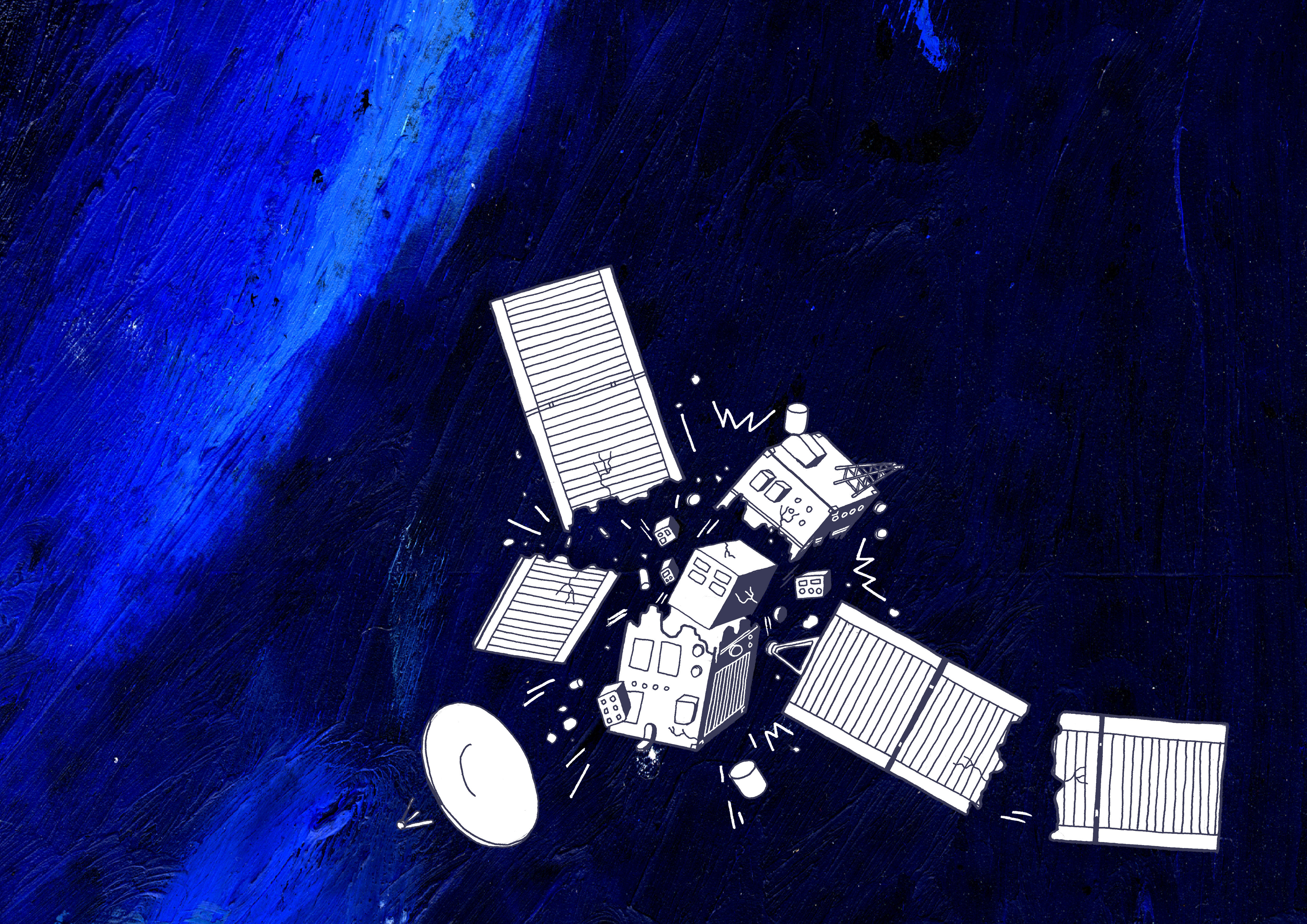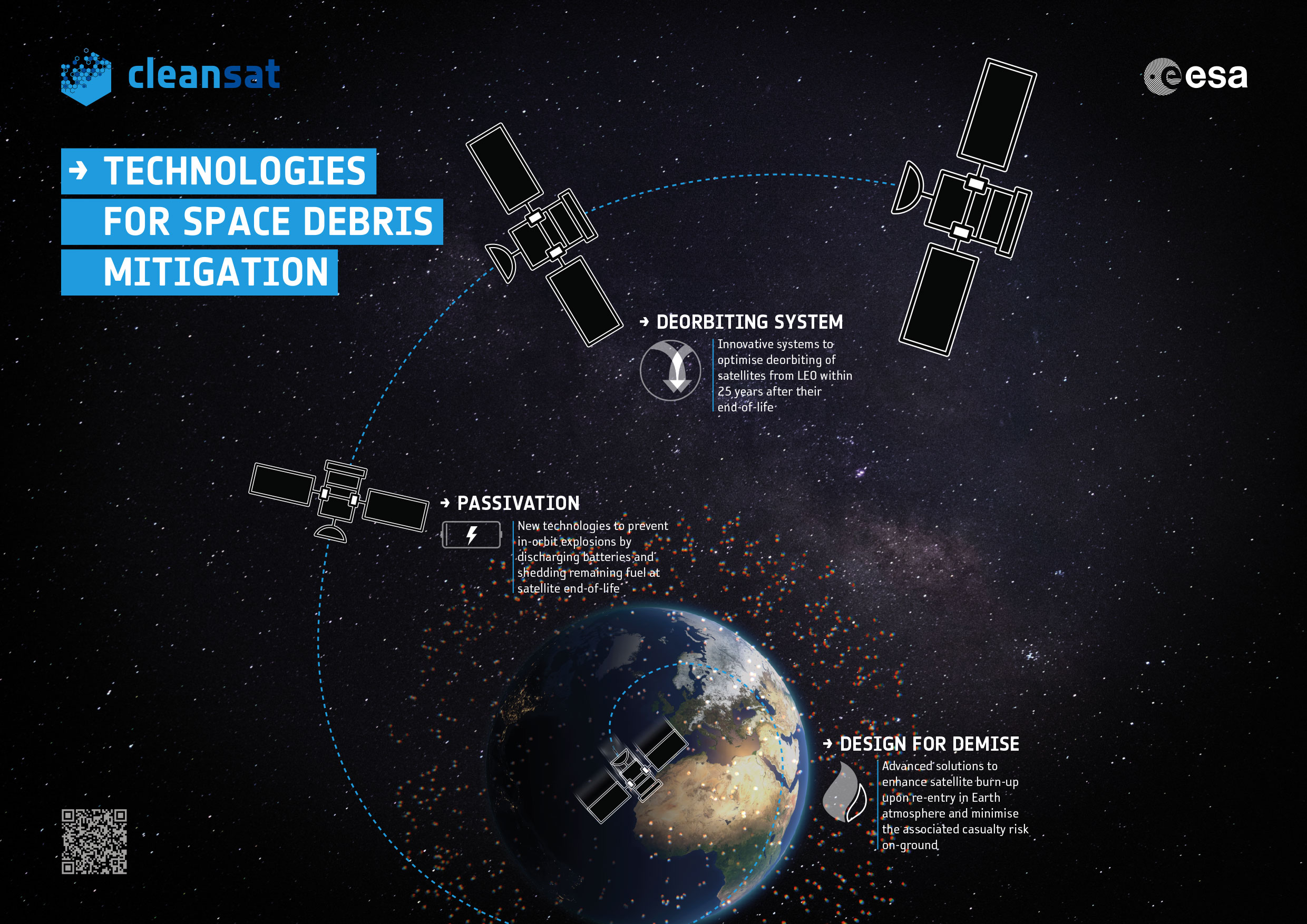ESA presents the first set of activities for 2017 in the field of CleanSat
The past six months have been quite intense for our CleanSat project and, as far as we can see, 2017 promises to be an exciting year too.
CleanSat is a technology project aiming at developing the necessary technologies to support the compliance of future satellites with Space Debris Mitigation (SDM) requirements.
Back in July, we published an overview of this innovative project with our long-term goals and strategy to develop the technologies that require advancements.
During the second half of 2016, we moved forward in many areas and worked on a large number of technical studies. In particular:
- we have finalized our 28 studies to design building blocks, i.e. the advanced pieces of equipment, together with Large System Integrators and suppliers that will allow implementing SDM requirements in future missions.
- completed a study to test deorbiting sails
- started an activity on a multidisciplinary approach to promote the early break-up of satellites during re-entry and ease their demise
- studied power passivation and propulsion passivation
- finalized testing of materials for design for demise
European integrators and suppliers have clearly expressed their appreciation to this concurrent approach to technology development. We have also continued our close cooperation with the Directorate of Earth Observation since, right now, it is the major ESA user of Low Earth Orbit where debris present a threat to new and existing space missions.
While working hard to move forward, at the same time, we have tried to secure the budget to keep implementing our strategy through all 2017. This past December, during ESA’s 2016 Ministerial Council, GSTP has been highly supported with a funding of 445 Meuro. Part of this funding can be used to support CleanSat activities.
To describe the first set of 2017 activities for which we are asking funding, we just sent out a GSTP Clean Space compendium which we published on EMITS News for comments by Industry and Delegations of GSTP Participating States. The received comments will be considered in the following updates of the GSTP Element 1 “Develop” Work Plan/Procurement Plan. The cover letter of the Compendium explains how to properly provide feedback.
So here is what we will be focusing on during the first months of the new year.
The work with System Integrators has highlighted that an upgrade of the LEO platforms to make them compliant with the SDM requirements is necessary and urgent, both for the institutional and the commercial markets.
“In doing so, it will be essential to guarantee that the building blocks developed within the CleanSat project and the development platform level are coordinated,” says Tiago Soares, system engineer at Clean Space. “This is the only way it would be possible for their integration in future missions to be timely and efficient.”

Credit: Marianne Tricot (Ecole Estienne Paris) – ESA
The goal of the next phase is to mature the high-priority technologies for integration within future LEO platforms – for controlled and uncontrolled reentry as well as for passivation devices:
Uncontrolled reentry
- demisable propulsion tanks
- demisable magnetorquer
- drag augmentation de-orbiting subsystem
Power Passivation
- Safety Testing of batteries
- PCDU upgrade for power passivation
Propulsion passivation
- Shape Memory Alloy Valve for propulsion passivation
Controlled re-entry
- Monopropellant arcjets to support controlled reentry
- Electronic Pressure Regulator
 Such developments will provide European industry with a competitive advantage and will established it as the worldwide leader in space debris mitigation. The budget required to mature this set of technologies up to TRL 7 is 14 M€.
Such developments will provide European industry with a competitive advantage and will established it as the worldwide leader in space debris mitigation. The budget required to mature this set of technologies up to TRL 7 is 14 M€.
As mentioned above, the activities needed to develop these technologies are part of the compendium. Every company that is interested in working with us on them can express its interest by following the instructions specified in the cover note to the compendium.
This is a very exciting time, but only the beginning. More activities and so more opportunities for fruitful collaborations between ESA’s Clean Space initiative and the European Industry will come up during next months. As we said, 2017 is going to be an exciting year.





Discussion: no comments